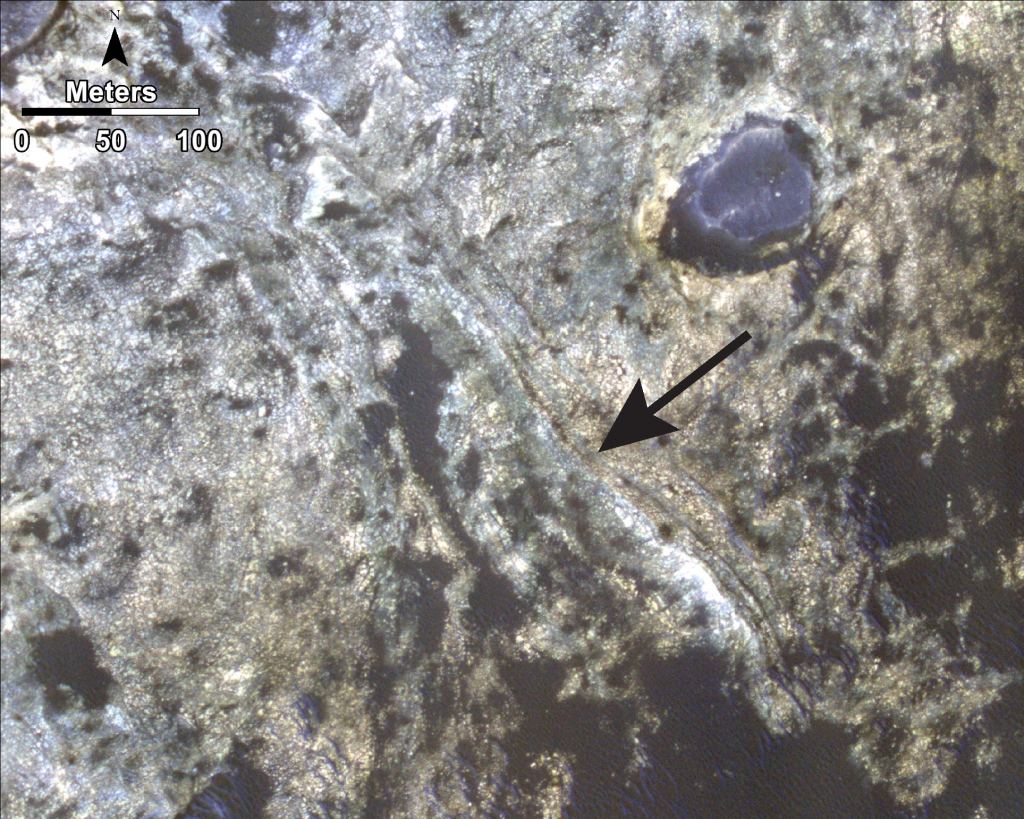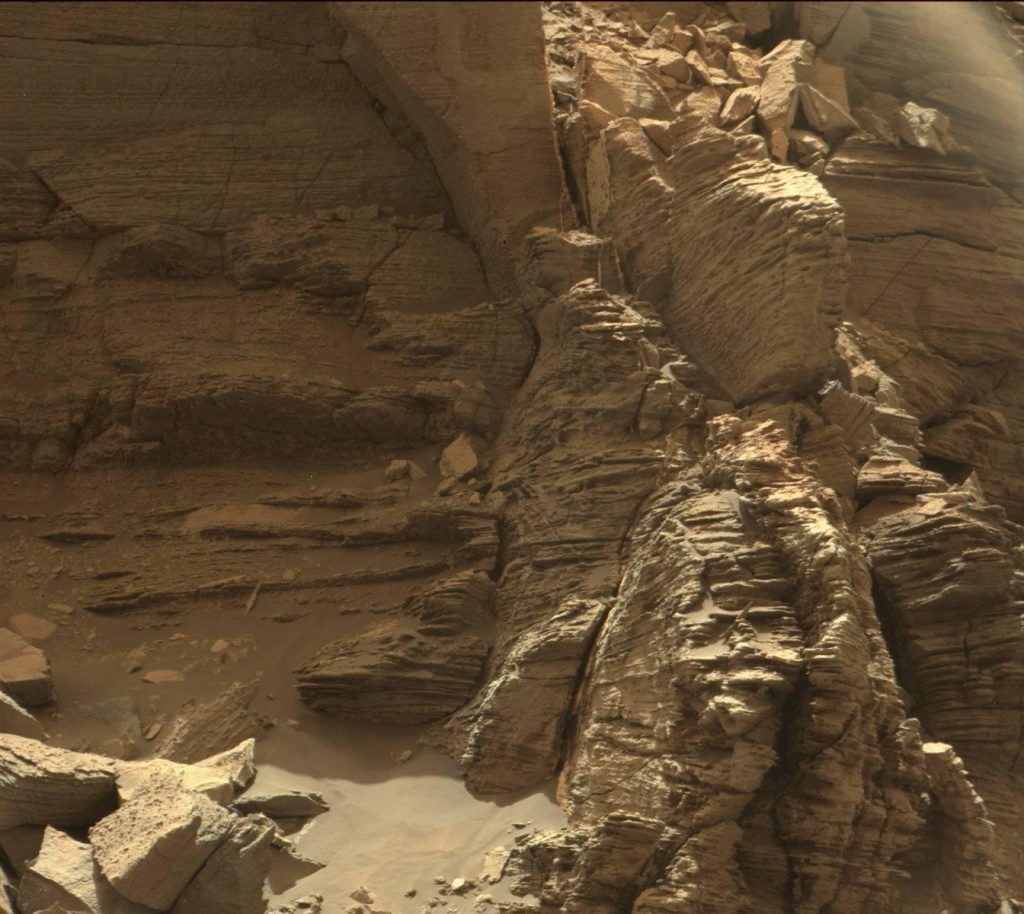Without Water and Life, Geology on Mars is Driven by the Wind
By Carolyn Collins Petersen
On Earth, we all know what changes our landscapes: water and wind erosion, tectonic activity, and volcanism. Today on Mars, wind-driven erosion is hard at work. Wind is an inexorable sculptor everywhere. And, it might have created places where planetary scientists and astrobiologists hunt for traces of primordial Martian life today.
The Work of the Martian Winds
Ever since Mars lost its water, the gentle force of wind erosion changed the Mars surface and affected its geology. That’s the conclusion of a group of planetary scientists led by astronaut and planetary scientist Jessica Watkins and Caltech professor John Grotzinger. Watkins worked as a post-doc with Grotzinger and is the first author of a paper describing their team’s work. (As it turns out, she reviewed the final version of the paper during her time on the International Space Station.)
“This paper describes the discovery of an unconformity in a sequence of sedimentary rocks on Mars,” she said, describing a discontinuity or break in the time of deposition between sequences of rocks. “In this case, it separates the rocks which record a time in which a lake was present at Gale crater and an overlying sequence of rocks which record a time when the climate was much drier leading to the formation of eolian sand dunes. The unconformity is significant in that it records not only the transition between environmental regimes, but also substantial erosion of the older (lacustrine, or lake) rocks before the younger (eolian, or wind-driven) rocks were deposited.”
Watkins began studying landforms and processes here on Earth as a way to understand the same events on Mars. “Mars is Earth-like in many ways,” she said. “I found it fascinating that we could study Earth processes and landforms to better understand those observed on Mars (and vice versa!).” Her work on the aeolian (wind-driven) processes on Mars led to a closer examination of Curiosity’s findings.
A Look at the Martian Rock Cycle
Grotzinger was the project scientist for the Curiosity mission. That rover is still providing first-hand evidence that the geology on Mars is very different from that on Earth. “The work of erosion on Mars is driven principally by the wind which acts like a feather duster over hundreds of millions to even billions of years,” said Grotzinger. “This is very different from Earth, for instance, where the extreme ruggedness of the San Gabriel mountains is created by torrents of rainwater dissecting the landscape over relatively brief periods of geologic time.”
While one aim of Mars missions is to “find the water”, understanding the rock cycle is just as crucial. Planetary scientists ask, how did the Mars rock layers form? How do they change? What destroys them? On Earth, molten rock flows from volcanic features to create igneous layers. It gets eroded by wind and rain and deposited as sedimentary rock. Water action is a big player here, as well as wind-driven deposits of sand and rock.
Finally, tectonic activity from below pushes layers of rock up (or drops them). Tectonic plates can slide into each other, causing continents to break apart or collide. That process has built the Himalayas and helped raise the Rocky Mountains. Then, erosion takes over and moves pieces of rock around.
Mars doesn’t have that kind of activity these days. Of course, it once had active volcanoes, slathering the land with lava. You only have to look at the Tharsis Bulge to see how the buildup of lava influenced that region. And, we all know that Mars had water. There’s evidence for that across the planet. But, there are no tectonic plates to slip and slide around causing Marsquakes and surface-altering episodes. So, without flowing water causing erosion over the past few billion years, what else changes the Martian landscape? The answer seems to be: wind erosion.
Clues from the Wind
Now, you might think that there’s not enough atmospheric pressure or volume on Mars to cause gale-force erosional winds. Well, that’s true, sort of. But, the influence of wind erosion, is there. You just have to look carefully for it. And, that’s what Watkins, Grotzinger, and other colleagues did. They studied Curiosity’s observations in Gale Crater for clues.

Gale Crater is a 60-kilometer-diameter dry lakebed on Mars. As it traveled across the crater, the Curiosity rover traced the Murray Formation. This is a 300-meter-thick layer of stratified mudstone named after the late Bruce Murray. He was a Caltech professor of planetary science and former head of Jet Propulsion Laboratory. Mudstone formed from fine-grained mud compressed by layers above it. Some of the top layers are relatively immune to wind erosion. However, in other places, the wind eats away at the top layers. There are also areas that look like ancient sand dunes marched across the region. As they moved, they deposited layers of sand, all driven by the action of the wind.
“Gale Crater is a spectacular place where you’re able to document multiple cycles of erosion,” Grotzinger said. “All of this helps us understand how Mars works overall and will inform scientists interpreting the observations of the Perseverance rover as well.”
Wind Erosion, Sedimentary Rocks, and Life
So, it seems that wind erosion—even the gentle style we see on Mars, can make big changes on the surface there. Where water reveals layers of rock on Earth, the wind does it on Mars. The findings of erosion-caused landscape changes in Gale Crater could be a clue to similar changes in other places on Mars. Data from Curiosity and Perseverance are giving planetary scientists like astronaut Watkins and Grotzinger a fresh look at the processes that shape rocky surfaces, and—possibly—preserve evidence of ancient life.
On Earth, wind-driven erosion and deposition of sand and rock particles preserved examples of our primordial biosphere. If the same thing happened to any possible early Mars life, then wind-drive sedimentary rocks on the Red Planet could prove to be a treasury of Martian biosignatures.
In a Q&A with students in August 2022, astronaut Watkins mentioned the current Perseverence mission studies on erosional deposits on an ancient lakebed delta. I am super-excited about the delta deposits that Perseverance is starting to climb up onto,” she said. “I think it’s going to be really illuminating for us and hopefully give us some insight into the habitability of Mars and hopefully find signs of ancient life, as well. These delta deposits will be the perfect place that, if there are those signs there, that’s where they’ll be.”
For More Information
Wind Drives Geology on Mars These Days
Burial and Exhumation of Sedimentary Rocks Revealed by the Base Stimson Erosional Unconformity, Gale Crater, Mars
The post Without Water and Life, Geology on Mars is Driven by the Wind appeared first on Universe Today.

September 17, 2022 at 12:23AM
via Universe Today read more...

Post a Comment